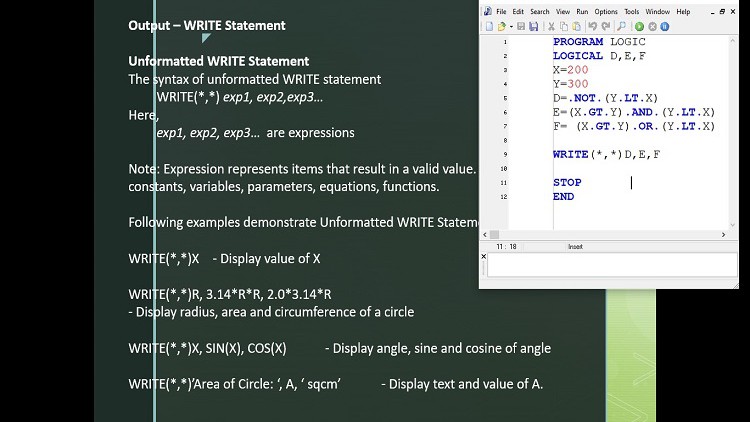
For Civil engineers
What you will learn
FORTRAN basics
Description
Fortran was originally named after the contraction of Formula Translation, highlighting Fortran’s origins as a language designed specifically for mathematical calculations. Fortran was developed in the early 1950s and the first ever Fortran program ran in 1954 – making Fortran fairly unusual among programming languages in that it predates the modern transistor computer – the first Fortran program ran on the IBM 704 vacuum tube computer! Fortran has outlived several nation states since its conception, and still is in wide use today in a number of specialised scientific communities. Unfortunately Fortran is often referred to as an ‘outdated’ or ‘legacy’ programming language. I disagree with this description, as although Fortran has a long history, the language continues to be updated, new features are developed and added to the Fortran language standard, and there is still a strong community behind Fortran. The latest Fortran standard was released in 2018, bringing many new features and keeping Fortran a relevant, highly performant language for contemporary scientific computing challenges.
Fortran is a computer programming language that is extensively used in numerical, scientific computing. While outwith the scientific community, Fortran has declined in popularity over the years, it still has a strong user base with scientific programmers, and is also used in organisations such as weather forecasters, financial trading, and in engineering simulations. Fortran programs can be highly optimised to run on high performance computers, and in general the language is suited to producing code where performance is important.
Fortran is a compiled language, or more specifically it is compiled ahead-of-time. In other words, you must perform a special step called compilation of your written code before you are able to run it on a computer. This is where Fortran differs to interpreted languages such as Python and R which run through an interpreter which executes the instructions directly, but at the cost of compute speed.
Content
